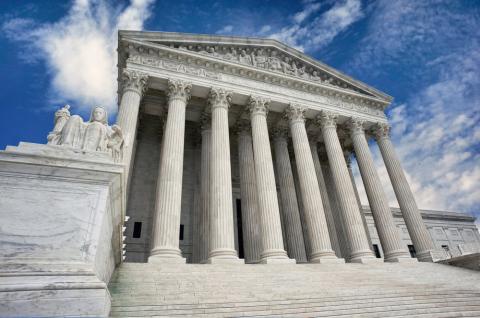On June 18, the U.S. Supreme Court decided the “gerrymander” case. In Gill v. Whitford, 2018 U.S. LEXIS 3692, 138 S. Ct. 1916, 2018 WL 3013807, Democratic Party members claimed that their rights were violated because there was a gap between the percentage of votes the Party secured in statewide elections and the number of legislators it was able to elect.
The disparity was attributed to the work of partisans who drew district lines custom made to maintain Republican control of the legislature. The Republican governor and both houses of the legislature approved the plan. The plaintiffs asserted that:
“… their constitutional rights to equal protection and freedom of association were violated because of the disparity between the vote totals of the two parties in statewide elections and the number of legislators elected by each party.
“Plaintiffs claimed that their capacity to win a majority in the state legislature was unconstitutionally diminished relative to their Republican rivals.”
IVN News, “Gerrymandering: Two Bullies vs. The Voters,” January 15, 2018
In a unanimous decision, the court dismissed the case for lack of standing. Chief Justice Roberts wrote the decision, noting that the situation of each plaintiff legally speaking turned on the makeup of the district where they resided, not the political make-up of the legislature:
“That shortcoming confirms the fundamental problem with the plaintiffs’ case as presented on this record. It is a case about group political interests, not individual legal rights. But this Court is not responsible for vindicating generalized partisan preferences. The Court’s constitutionally prescribed role is to vindicate the individual rights of the people appearing before it.” (Gill, p. 37)
Justice Roberts identified not only the weakness of the lawsuit, but the underlying problem affecting our politics and government. Just as in the lawsuit where party interest sought to subordinate individual interests, in Congress and state governments party interest subordinates national and state interests.
Roberts recognized that the Supreme Court cannot become an instrument of partisan maneuvering. The Constitution is about the rights of Americans, not the rights of Democrats and Republicans.
Whether the Supreme Court can maintain that orientation is not guaranteed. With the retirement of Justice Anthony Kennedy, Congress is faced with approving his successor on the Supreme Court.
As President, Trump has the right to nominate a candidate and his choice is Brett Kavanaugh, who served in the Bush administration before being appointed to the U.S. Court of Appeals for the District of Columbia Circuit. But it is up to the Senate to confirm.
Unfortunately, Justice Roberts’ admonition notwithstanding, the nominating and confirmation process is shaping up to be a partisan battle royal.
The newspapers have been full of discussion about how the Republicans hope to secure a conservative majority for decades by replacing Kennedy (often the swing vote siding sometimes with the court’s liberals and sometimes with its conservatives) with a young conservative. There is even talk among Democrats of increasing the size of the court so that, if they take back control of Congress and the White House, the Democrats can undo the “damage.” (John Podhoretz, NY Post, 7/5) At the height of the New Deal, President Roosevelt tried to do that after the Supreme Court struck down some of his legislative package.
The Democrats are mobilizing their base (with a view no doubt to the upcoming congressional elections) with dire -- and exaggerated -- warnings that the right to an abortion is at stake. Roosevelt lost the “court packing” fight. The country and his legislative agenda survived.
Who speaks for the country now? Of the three branches of government, the Supreme Court comes closest to having a lens that is not entirely determined by the parties. Let’s hope that Kavanaugh, whatever partisan reasons gave rise to his nomination, can follow Justice Roberts’ example, and the example of such giants as Earl Warren.
Warren, the Republican governor of California, was nominated to the court by President Eisenhower and served as Chief Justice from 1953 to 1969. The “Warren Court” held that segregation of public schools was unconstitutional and greatly expanded the rights of criminal defendants.
Ultimately, the American people will have to act to break the stranglehold of party on our body politic. In the meantime, let’s hope the Supreme Court continues to look beyond the partisan brawls.
